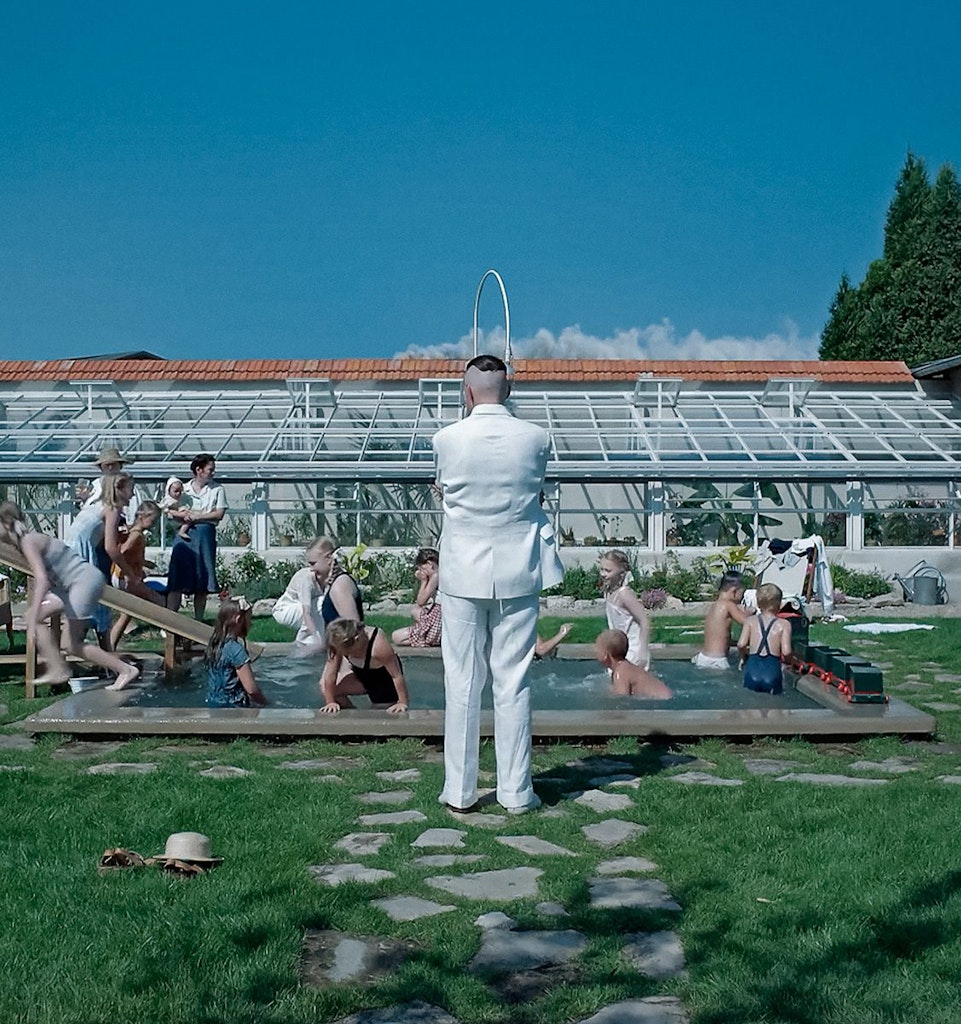The law that could save our Crooked Houses
Important buildings deserve speedier protection
Pity the poor, unfortunate husband-and-wife property developers Adam and Carly Taylor, recent purchasers of the famous and much-loved 18th century Crooked House Pub near Dudley. A striking hostelry by any standard, the leaning building was best known for extraordinary angles and forced perspectives thanks to extreme subsidence, with skewed windows and a tilted bar that made marbles and coins appear to roll upwards.
Having bought it from the brewer Marstons just two weeks earlier, imagine how heartbroken they must have been when, just days after someone submitted it to Historic England to be considered for listing, the property was mysteriously consumed by fire — surely the last thing any property developer wants.
It gets worse. According to the Staffordshire fire service (who are now investigating this as arson), fire crews were hindered by a series of, no doubt completely unrelated, giant “mounds of mud and soil placed in the centre of the road” in front of the pub. At this time there is no indication that the Taylors, who ran a neighbouring landfill site, were in any way involved.
The owners were forced to rebuild the pub brick by brick
Fortunately for Carly and Adam, fire crews managed to overcome these impromptu, earthen road blocks and eventually save much of the shell of the building, so distinctive for its visual wonkiness. It even seems that some of the more valuable contents of the pub had, fortuitously, been safely removed beforehand. Wonderful luck. South Staffordshire Council visited the site the very next day, met with the “landowner’s representative”, and agreed a programme of works to ensure the stability and safety of the remaining structure — pending investigations and, of course, potential restoration.
Alas, within 24 hours, footage appeared online of someone completely demolishing every single surviving element of the structure, against the explicit instructions of the council. Whether this was innocent confusion, or some sort of escaped lunatic on a random heritage-destruction-spree who crept past guards with a hired digger (hired, it seems, by the Taylors themselves, just days before the fire), we simply can’t know at this stage.
How unfortunate that all of this occurred after an application had been made to list the building, but before it could actually be assessed for listing, or, in fact, get listed at all.
It isn’t the first time.
In 2015 the Carlton Tavern in Maida Vale was likewise unlawfully demolished whilst under consideration for listing, to facilitate hi-rise luxury flats. Uproar ensured. Thanks to tireless campaigning from locals, the owners were forced to rebuild the pub brick by brick, salvaging as much as possible from the wreckage. In 2018 a company wanted to redevelop Swindon’s Victorian Clifton Street School, so it covertly began demolition and left the butchered property to degrade and collapse. After a community group refused to let it drop, a judge likewise ordered it restored from the rubble. Just last year the 18th century Punch Bowl Inn in Lancashire was ordered rebuilt from remains after owners abruptly tore it down to create a caravan site.
That last case was relatively straightforward, as the Punch Bowl was already Grade II Listed — the others likely only succeeded thanks to protracted and intensive publicity work from campaigners. There was also the technicality of the demolition itself not following correct planning rules. The heritage aspect is, when unlisted, rarely of much legal relevance. Andy Street, West Midlands Mayor, is rightly urging the local authority to pursue a similar outcome for the Crooked House. Thanks to extreme public interest (and the strong regional identity of the Black Country), it might just succeed. If it does, it likely won’t be because of any historical significance or alleged arson, but simply because of the technically incorrect demolition process of the burned out remains.
It is an insidious loophole. Landowners are notified in advance of any intent to consider their properties for listing. Because the building is not yet listed, almost any destruction short of demolition can then still be justified as permitted development. Because so little of heritage value is left intact by the time assessors arrive, it then doesn’t get listed and is treated as unworthy of protection.
In 2008 developers took hammers to the frontage of Liverpool’s once-beautiful Josephine Butler House, obliterating its ornate Victorian facade and taking it down to bare brick. It was not technically demolition, but, as the defaced building was now not well-preserved enough to list, the local authority was happy to approve an application to level it the following year. Proper procedure had been adhered to.
In Bristol, 2017, a heartbreakingly beautiful, hand-sculpted, 17th century ornamental ceiling was torn down and broken to pieces by developers, just days before a site visit was scheduled to assess it for protection. After this perfectly legal damage, the building “did not meet the high benchmark for listing”. The development continued unhindered, adhering to the letter of planning law.
In 2020, during Covid closures, the previously thriving Sarah Mansfield pub in Willey, Warwickshire, was purchased and turned into a derelict shell within days. It was left gutted and empty until the following year when, because it was otherwise unusable, planning permission was granted to redevelop into flats. The man responsible? Our Adam Taylor.
It doesn’t have to be this way.
Apparently, it was not a priority in the wake of the banking crisis
In 2016 the Welsh Assembly introduced Interim Protection for Wales, whereby temporary protections are automatically granted as soon as a building is submitted for listing consideration, with any damage done thereafter explicitly illegal. Not only has this been hugely successful in practice, but it is basic common sense. Maddeningly, that 2016 legislation was based on the 2008 draft Heritage Protection bill, an English precedent which covered all of this but was never actually enacted by Gordon Brown’s government. Apparently, it was not a priority in the wake of the banking crisis.
This problem is not going away. As housing demand intensifies and shared cultural values diminish, it will likely get worse. The time is right to revive the 2008 bill (as this petition calls for), or at the very least to introduce immediate, automatic Building Preservation Orders for all listing applications. The current BPO system is rarely used, with councils scared of getting pursued for costs, and the process is too slow to prevent premeditated destruction. Police need to be given powers to take full possession of such damaged properties whilst investigations are ongoing, to secure evidence if nothing else. If we are serious about learning lessons from the debacle at the Crooked House, and the many others that preceded it, then we have to act and act soon.
I hope the Crooked House is rebuilt from the ruins. I hope the overdue laws that could properly protect our heritage are finally put in place. I hope Adam and Carly Taylor hope so, too.
Enjoying The Critic online? It's even better in print
Try five issues of Britain’s newest magazine for £10
Subscribe














